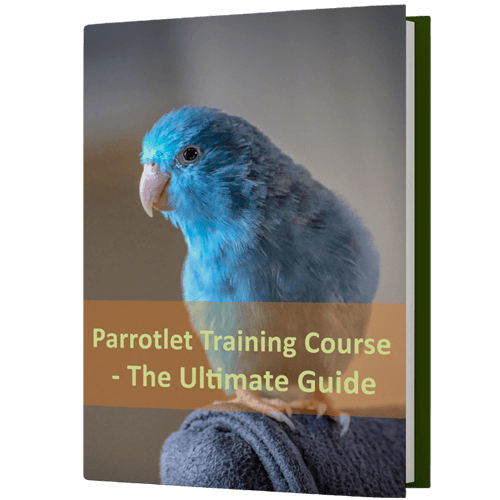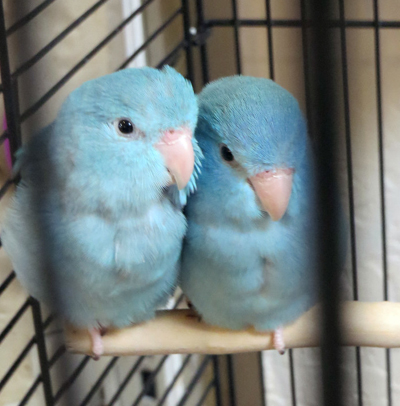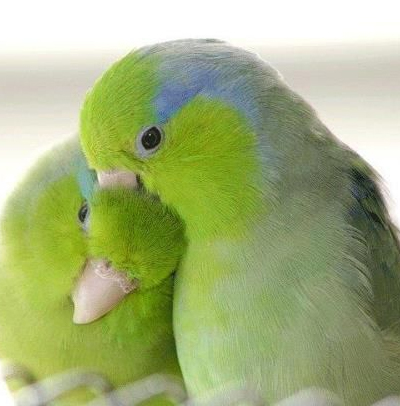
About Pacific Parrotlet
The Pacific Parrotlets are some of the most pernicious and spunky creatures in the Parrot Family. The Pacific Parrotlet, like most Parrotlets, is full of undying energy. You will always see it swinging on its perch or eating seeds or nibbling at the toys. But you will hardly see it sitting still.
Sign-up for the Free Course on Parrotlet Training
Size: 10 - 14 cm / 4 - 5 inches
Life Expectancy: 12 - 20 years
Description
The male Pacific Parrotlet has a cobalt blue streak of feathers extending backward from the eye as well as cobalt blue on the back, rump and wings. The females sometimes have an eye streak but it is usually light turquoise or emerald green. The Pacific Parrotlet has a dark green back and wings with light green feathers on the face.


